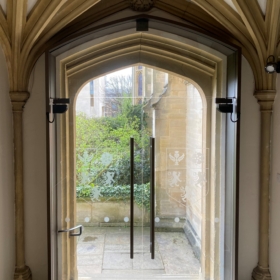Planning for schools development
Comment by Lucy Anderson, Associate Director, Boyer, part of Leaders Romans Group.
The new Labour government’s intention to charge VAT on school fees is just one reason why independent schools are looking to make savings. Economising without impacting quality is not just necessary in view of this shock to school finances, it’s simply good business sense.
Boyer works with several independent schools on an ongoing basis, in each case with the objective of using planning to support new initiatives.
So, how can planning help?
Creating a USP is central to many schools’ business strategies and certainly unique benefits enable schools to differentiate themselves from the intense competition.
We’re increasingly seeing schools introducing new facilities which do exactly that. Post-Covid there has been a focus on supporting students’ physical and mental health. Dedicated facilities can support counselling, physiotherapy and more. Sensory gardens and conditioning suites can provide a competitive edge.
Inevitably new (and many repurposed) facilities require planning permission, but Permitted Development Rights (PDR) provide a welcome alternative to submitting a planning application through the local authority and waiting a standard 8 or 13 weeks (but often more) for determination.
The legislation surrounding PDR is often complex and can be hard to interpret, with several specific conditions and requirements which have to be adhered to.
For schools and other educational estates, Schedule 2 Part 7 Class M of The Town and Country Planning (General Permitted Development) (England) Order 2015 (as amended) allows for certain extensions and alterations to be made to buildings, as long as the amendments meet a certain set of criteria and parameters.
Schedule 2 Part 7 Class N also allows for the provision of a new hard surface (such as car parking spaces) to be provided within the curtilage of an existing school, college and university, although this can be limited to a relatively small area.
However it is important to recognise that whilst the opportunities relating to schools under PDR are more limited than for other sectors, they can still be extremely beneficial from an operational perspective, particularly in terms of making more efficient use of external space. For instance, there are also opportunities through PDR to make temporary adjustments / erect temporary structures (i.e. they are required to be ‘moveable’) within a school which could support the use of outside spaces for external events.
However it is important to note that permitted development is only allowed in specific circumstances and is often time-limited.
For example, a school recently considered the option to open its tennis courts and swimming pool to the public. To do so required additional floodlighting, but as the lights were temporary and limited to a specific height, this could be achieved through Permitted Development Rights (as opposed to a formal planning application), at comparatively little cost and time to the school.
Performance spaces are commonly hired out for external use, particularly during school holidays when they might be used for music or drama courses or festivals. The more flexible the space, the more opportunities it presents – and PDR can help to create this flexibility.
Planning permission may be required for the changes to access and parking capacity which invariably come with changes to facilities, although it may be possible to achieve some flexibility through Permitted Development Rights. However, this applies in some circumstances but not all, so it’s always worth checking with a planning consultant. This is especially important if the site includes listed buildings or adjoins the setting of a heritage asset as many Permitted Development Rights cease to apply in relation to listed buildings.
Although the changes described above can technically be exercised without obtaining formal planning permission, from a commercial standpoint there are also benefits of submitting an application to secure a Certificate of Lawful Development. The main benefit is that a Certificate of Lawful Development reduces the prospect of any enforcement action being taken by the Local Planning Authority, whilst also providing sufficient comfort that the structure is legally compliant with the relevant legislation – which is particularly important when it comes to any acquisitions or disposals of assets.
In terms of the application process, although delays are commonplace throughout the planning system, the process of applying for a Certificate of Lawful Development has been streamlined recently. This means there are only a limited number of key considerations able to be taken into account and in line with government guidance, the statutory timescale for a decision is 8 weeks.
At Boyer we have prepared, submitted and managed these types of applications for many clients, securing consent for Certificates of Lawful Development for their peace of mind. We’ve seen many times over what a great opportunity this presents in increasing revenue at very little expense.
Our experience of schools seeking to create maximum value from their facilities is that flexibility is much more easily obtained if the schools have a good relationship with the Local Planning Authority. We seek to ensure that readily-available communication channels exist which enable open dialogue and can make a world of difference, especially when there is a clear correlation between the school’s business success and the impact on the local economy.





Leave a Reply
Want to join the discussion?Feel free to contribute!